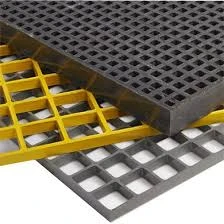loading...
- No. 9, Xingyuan South Street, Dongwaihuan Road, Zaoqiang County, Hengshui, Hebei, China
- admin@zjcomposites.com
- +86 15097380338
- Welcome to visit our website!
frp walkway price
Understanding FRP Walkway Pricing Factors, Benefits, and Considerations
In recent years, the construction and infrastructure sectors have seen a significant shift towards using advanced materials that enhance durability, reduce maintenance costs, and improve overall performance. One such material that has gained traction is Fiber Reinforced Polymer (FRP). FRP walkways, made from a composite of polymer resin and reinforcing fibers, have become increasingly popular due to their exceptional strength-to-weight ratio, corrosion resistance, and ease of installation. However, one question that often arises among project managers and property owners is what influences the price of FRP walkways?
Factors Influencing FRP Walkway Pricing
1. Material Composition The type and quantity of reinforcing fibers used in the FRP will greatly affect the cost. Common fibers include glass, carbon, and aramid, each with its specific properties and price points. For instance, carbon fiber composites generally offer superior strength but come at a higher cost compared to glass fibers.
2. Manufacturing Process The method of production plays a crucial role in pricing. Techniques such as pultrusion or hand lay-up can vary substantially in cost, with automated processes typically being more efficient and less labor-intensive. The choice of manufacturing method will depend on the intended application and the volume of materials required.
3. Application and Customization FRP walkways can be tailored for specific environments and applications, which can influence price. For example, walkways designed for marine environments may require additional treatments to enhance corrosion resistance. Custom designs, colors, and patterns also contribute to higher costs due to the increased complexity and additional production requirements.
4. Size and Length The dimensions of the walkway significantly impact pricing. Larger walkways necessitate more raw materials and often require more complex installation methods. Project managers should assess project requirements to estimate material needs accurately.
5. Installation Requirements Beyond just the walkway material, the installation process can also affect the overall price. Some projects may require specialized labor or equipment to ensure proper installation, especially in challenging environments. Additionally, factors such as site accessibility and existing infrastructure can impact labor costs.
6. Market Demand and Geography Local market conditions can play a vital role in pricing. High demand for FRP walkways in certain regions, influenced by an uptick in construction or infrastructure projects, can lead to increased costs. Transportation costs may also vary depending on the distance from the manufacturing facility to the construction site.
frp walkway price

Benefits of Investing in FRP Walkways
Despite the factors influencing their price, FRP walkways present several compelling benefits, making them a worthy investment for many applications
- Durability FRP materials are highly resistant to corrosion, weathering, and UV damage, resulting in significantly longer lifespans compared to traditional materials like wood or metal. This durability often translates to lower long-term maintenance costs.
- Lightweight The lightweight nature of FRP makes it easier to handle and install, reducing labor costs and installation time. This characteristic is particularly beneficial for projects in difficult-to-access locations.
- Design Flexibility FRP walkways can be molded into various shapes and sizes, allowing for greater design flexibility. This adaptability enables architects and builders to create aesthetically appealing solutions tailored to specific project needs.
- Safety Many FRP walkways are designed with safety features such as slip resistance, making them suitable for various environments, including industrial sites and public walkways.
Conclusion
Understanding the pricing of FRP walkways involves considering a multitude of factors, from material composition and manufacturing processes to market dynamics and installation requirements. While the initial investment in FRP may be higher compared to traditional materials, the long-term benefits, including durability, reduced maintenance, and design flexibility, make them an attractive option for many projects. As the demand for sustainable and resilient infrastructure continues to grow, FRP walkways are poised to play a significant role in modern construction practices. When evaluating your next project, consider the value that FRP can bring, and consult with manufacturers or suppliers to get accurate pricing tailored to your specific needs.
-
GRP Structures: The Future of Lightweight, High-Performance EngineeringNewsJun.20,2025
-
FRP Water Tank: High-Performance Storage for Corrosive and Clean Water SystemsNewsJun.20,2025
-
FRP Square Tube: The New Industry Standard for Chemical and Structural ApplicationsNewsJun.20,2025
-
FRP Pultruded Profiles: The Ultimate Choice for Lightweight Structural StrengthNewsJun.20,2025
-
FRP Handrails: The Safer, Smarter, and Stronger Choice for Modern InfrastructureNewsJun.20,2025
-
FRP Grating: The Smart Solution for Durable, Lightweight Industrial FlooringNewsJun.20,2025
-
Why Choose a Galvanized Water Tank for Your Storage NeedsNewsMay.21,2025
